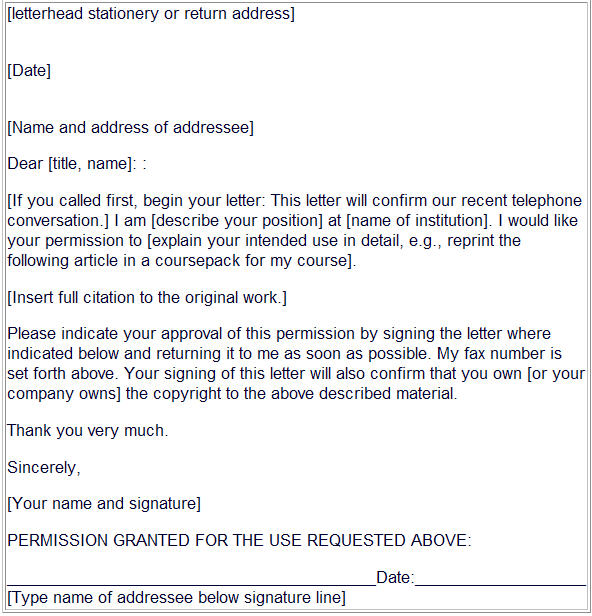Web Design - Copyright Law: Finding, Saving, and Citing Sources |
|
| Sections: Introduction | Section 1 | Section 2 |
| Section Two: Part A | Part B | Part C | Part D | Part E | Part F | Part G |
Obtaining Permission
Do you want to use copyrighted information, images or other files for a non-educational Web site or use more than the amount allowed under Fair Use? Then you will need to find out who holds the copyright. Most of the time the copyright holder's name and address are included in the material. If neither are found, you can try the library since they have publisher's addresses and telephone numbers. Although you can request permission over the phone, it is best to submit your request in writing. Include the following information:
Be sure to allow ample time for a response. The copyright holder may have questions, may request a fee or may require some restrictions. Please keep in mind that copyright owners have wide discretion when responding to your request for permission.
For most common uses of materials beyond Fair Use for educational and research purposes, you will often find that copyright owners will be cooperative and will understand your needs. It is very important to observe these restrictions carefully to avoid delays in your publication/up loading. Always keep your approved use letter on file for future reference. A Sample LetterBelow is an example of a letter with instructions for use of copyrighted material: 
Instructions for Permission LettersUse the instructions below to request permission to use images found on the internet:
PERMISSION GRANTED FOR THE USE REQUESTED ABOVE: References:
Used with permission by California State University Copyright (c)1995, The Trustees of California State University. |
|
© All rights reserved. |